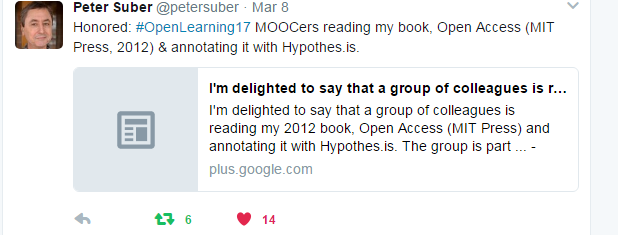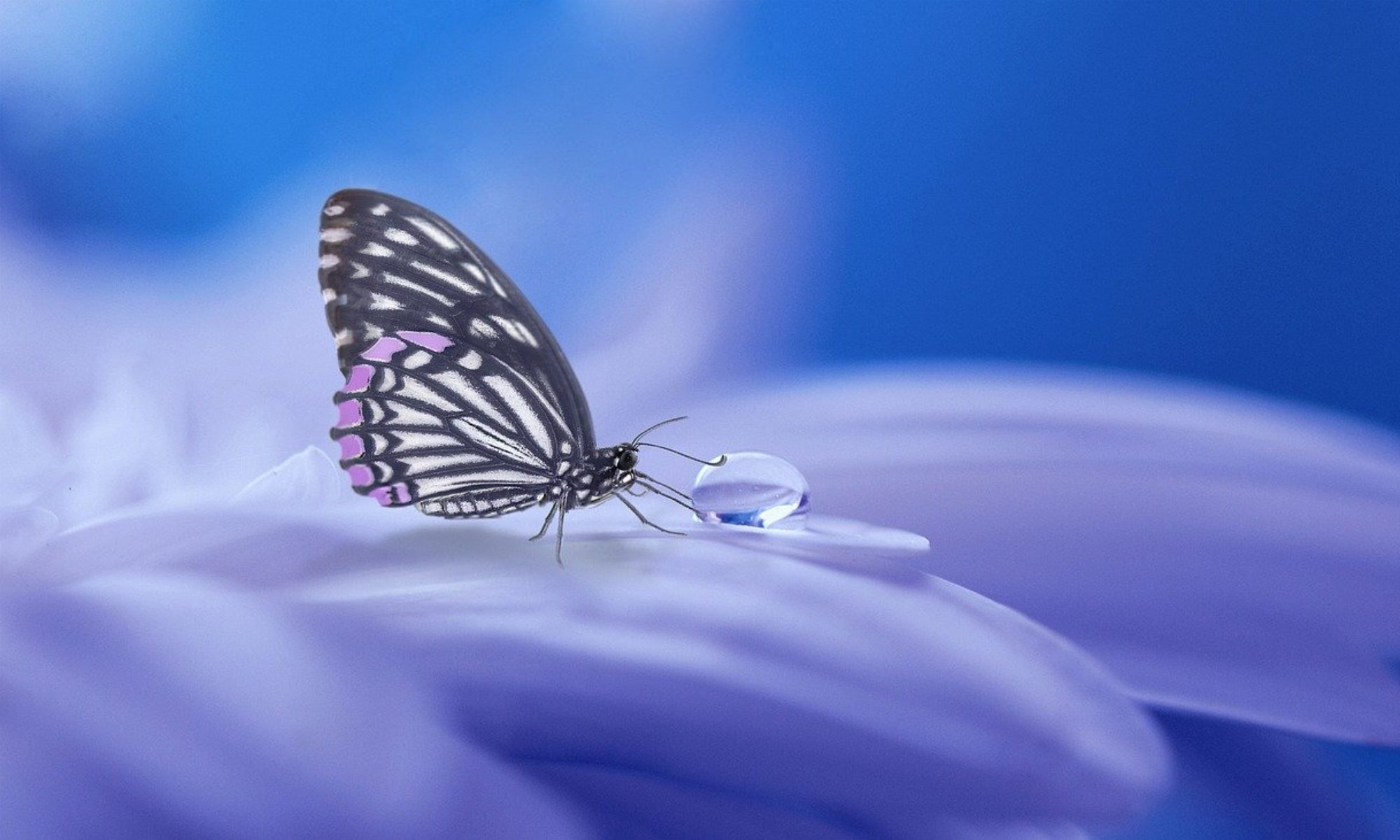When I started out on this journey with the Faculty Collaboratives Steering Committee and the OpenLearning17 cMOOC, I found out that in order to fully participate, we needed to have a blog and a Twitter account. We would have weekly Twitter chats (whatever those were…) and our blogs would be linked to the main site for all to see. I definitely felt like a novice. I had played with eBlogger sometime back in the noughties and I had created a Twitter account a couple of years ago, but hadn’t ever tweeted or retweeted and I rarely logged in. I was using other social media pretty actively in my downtime (I’m a Pinterest junkie with nearly 2,000 followers; librarians love to curate!), but I hadn’t yet wrapped my mind around how I could use Twitter in my professional life. I had talked with colleagues who use it to keep up in their field or with the news, but it just seemed like noise to me.
I dutifully started a blog and found the hashtag #OpenLearning17 on Twitter. A couple of people from the cMOOC started following me and I followed them back, pretty sure that was the polite thing to do. Then came the “share your space” OpenLearning17 Twitter chat that our Connected Learning Coach, Laura Gogia facilitated. It was into the fire pan chaos! It was like my first tango lesson, lots of missed steps, a few sweeping moves where I almost thought I was getting the hang of it and then it was over before I even knew what had hit me. By the time it ended, I was already working on my strategy for next time (Refresh, refresh, refresh! Shorter tweets! Don’t forget the hashtag!).
By the time the Open Access week rolled around in week 7, I had already won an award (in the form of a Minion meme–thanks for the encouragement, Amy Nelson!) for “most improved” and my Twitter activity was working its way towards the top of the charts in the cMOOC. When Gardner Campbell pulled up the network map showing the participants and their activity, I was stunned to see that my name wasn’t a spec as I had expected it to be. It was actually legible, a real deal. Even though I didn’t feel like I was participating enough, I was a player, just by making an effort and building a strategy.
Then came Open Access week. I am so grateful for the opportunity to have co-facilitated the week with Maha Bali, who is one of the most networked people I know . “I’m pretty good at getting people to agree to Hangout,” she assured me as we started our planning together. Great, and I’m pretty good at finding good sources on topics (I am a librarian, after all). So off we went on our tasks. I found the Peter Suber text and knew it was just right for the week’s reading. We’d use Hypothes.is to annotate the text. “Oh yeah, Suber is great. I’ve met him,” she said. And the next thing I knew she had talked him into joining our Google Hangout.
Dang, she is good at this! We agreed that I would handle the chat while she asked Suber the questions. He’s really delightful in that down-to-earth, brilliant sort of way. So I hammered away in the chat, adding links and catching questions from the participants. I was working the chat like a champ.
Then we had an amazing VirtuallyConnecting session (cut to me Googling VirutallyConnecting–oh, what a cool idea!). Uber-networked Maha set this up with folks from around the globe who were attending OEGlobal in Cape Town, South Africa. I was going to let Maha take this one solo and watch the video later, but then I decided I wanted to be there in the moment, even if it meant getting up at o-dark thirty (have I mentioned that I am NOT a morning person?). I was only on my first cup of Joe and I was hitting the chat hard and they were liking what I had to say. That was the moment when I decided to join the revolution.
I found them all on Twitter and followed them; they followed me back! So now I’m connected to those amazing educators who are pushing the Open movement forward all around the globe. I retweet them, they retweet me. It’s getting to know you on the Net.
The cMOOC wrapped up with an empassioned Google hangout with Gardner, Amy, Steve Greenlaw and Susan Albertine (even watching the recording is moving). I didn’t want the cMOOC to end!
The opportunity to have a panel about the cMOOC came along, thanks to ODU’s Faculty Summer Institute on OER and Stephanie Blackmon’s initiative in writing a proposal. Over lunch during the conference, I met some of the other Faculty Collaboratives Steering Committee members for the first time. In talking about my journey in the course, Gardner Campbell told me I was now a node and had the responsibility to keep it up. What? Me, a node?! I felt like I’d become a Jedi knight (use the Force, Sue) after being an apprentice for months. Node you are, connect you will.
I started the cMOOC with no followers on Twitter. I remember Maha noting that she was my first. I’m up to 30 followers and 239 tweets and counting. 15 weeks from zero to thirty, novice to node. It’s that easy, folks, but you do have to make an effort. You have to be present and active. You have to want to be part of the conversation. You might have to leave your comfort zone behind. And you might have to get up in the dark to chat with passionate people doing amazing things, all for the good of students and the power of learning together.



